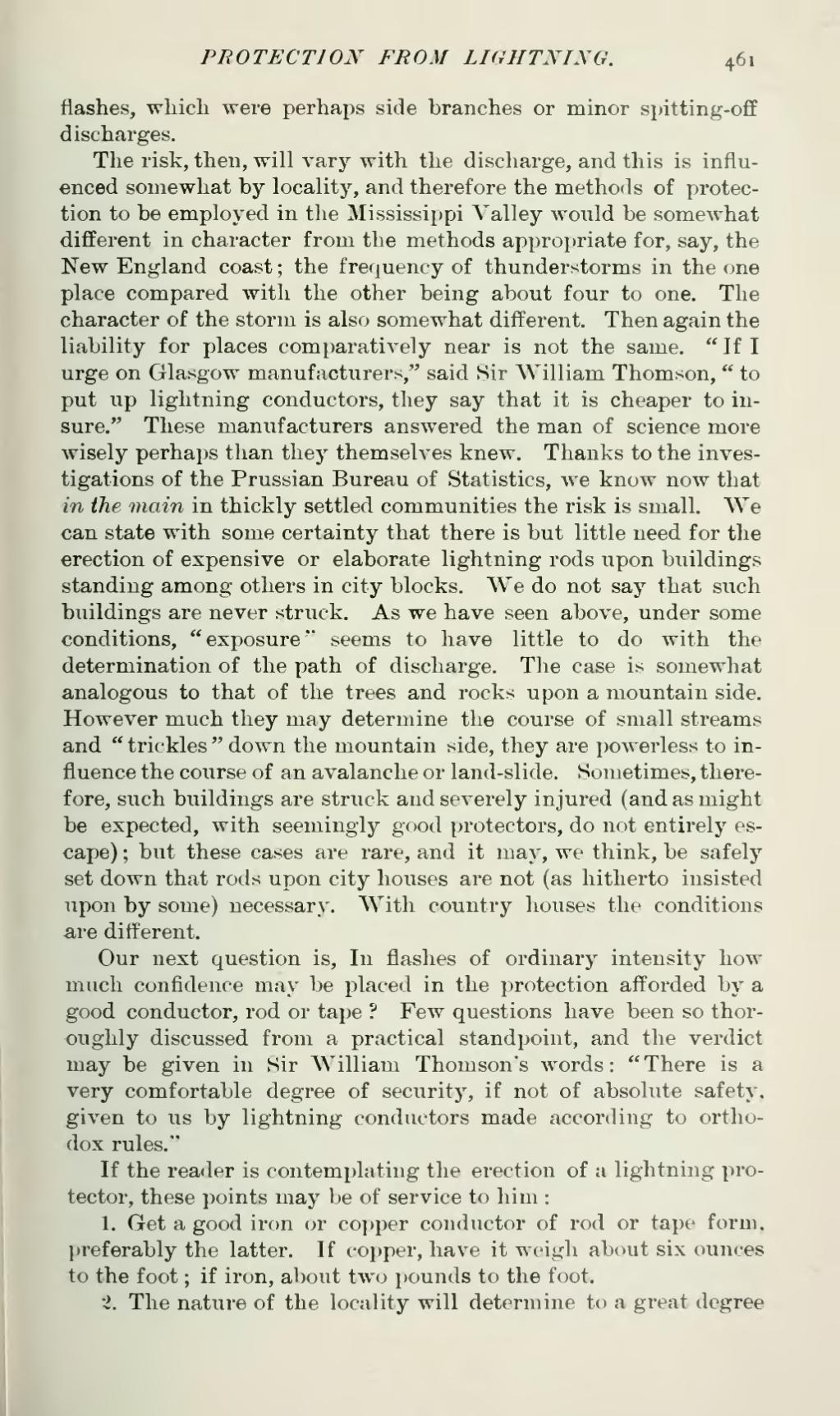flashes, which were perhaps side branches or minor spitting-off discharges.
The risk, then, will vary with the discharge, and this is influenced somewhat by locality, and therefore the methods of protection to be employed in the Mississippi Valley would be somewhat different in character from the methods appropriate for, say, the New England coast; the frequency of thunderstorms in the one place compared with the other being about four to one. The character of the storm is also somewhat different. Then again the liability for places comparatively near is not the same. "If I urge on Glasgow manufacturers," said Sir William Thomson, "to put up lightning conductors, they say that it is cheaper to insure." These manufacturers answered the man of science more wisely perhaps than they themselves knew. Thanks to the investigations of the Prussian Bureau of Statistics, we know now that in the main in thickly settled communities the risk is small. We can state with some certainty that there is but little need for the erection of expensive or elaborate lightning rods upon buildings standing among others in city blocks. We do not say that such buildings are never struck. As we have seen above, under some conditions, "exposure" seems to have little to do with the determination of the path of discharge. The case is somewhat analogous to that of the trees and rocks upon a mountain side. However much they may determine the course of small streams and "trickles" down the mountain side, they are powerless to influence the course of an avalanche or land-slide. Sometimes, therefore, such buildings are struck and severely injured (and as might be expected, with seemingly good protectors, do not entirely escape); but these cases are rare, and it may, we think, be safely set down that rods upon city houses are not (as hitherto insisted upon by some) necessary. With country houses the conditions are different.
Our next question is. In flashes of ordinary intensity how much confidence may be placed in the protection afforded by a good conductor, rod or tape? Few questions have been so thoroughly discussed from a practical standpoint, and the verdict may be given in Sir William Thomson's words: "There is a very comfortable degree of security, if not of absolute safety, given to us by lightning conductors made according to orthodox rules."
If the reader is contemplating the erection of a lightning protector, these points may be of service to him:
1. Get a good iron or copper conductor of rod or tape form, preferably the latter. If copper, have it weigh about six ounces to the foot; if iron, about two pounds to the foot.
2. The nature of the locality will determine to a great degree
